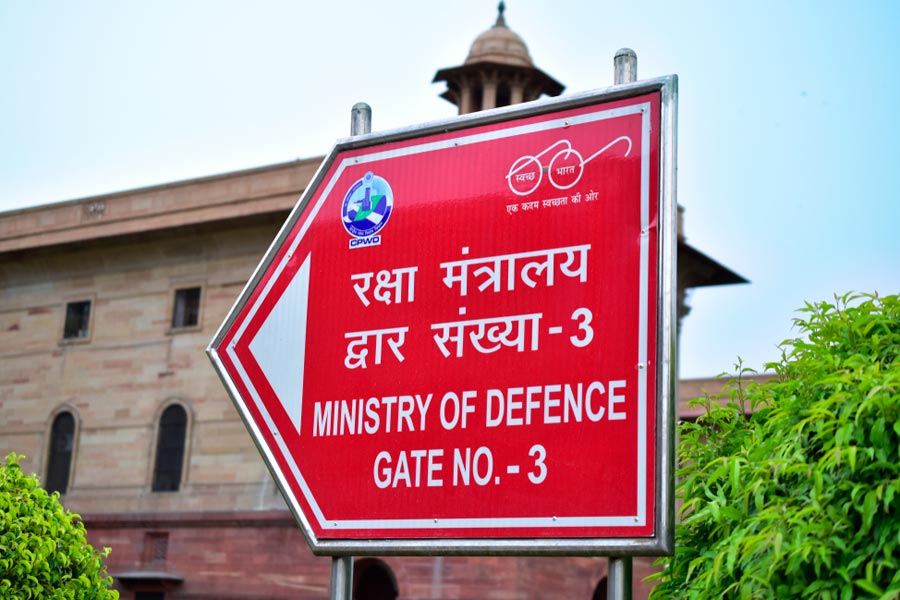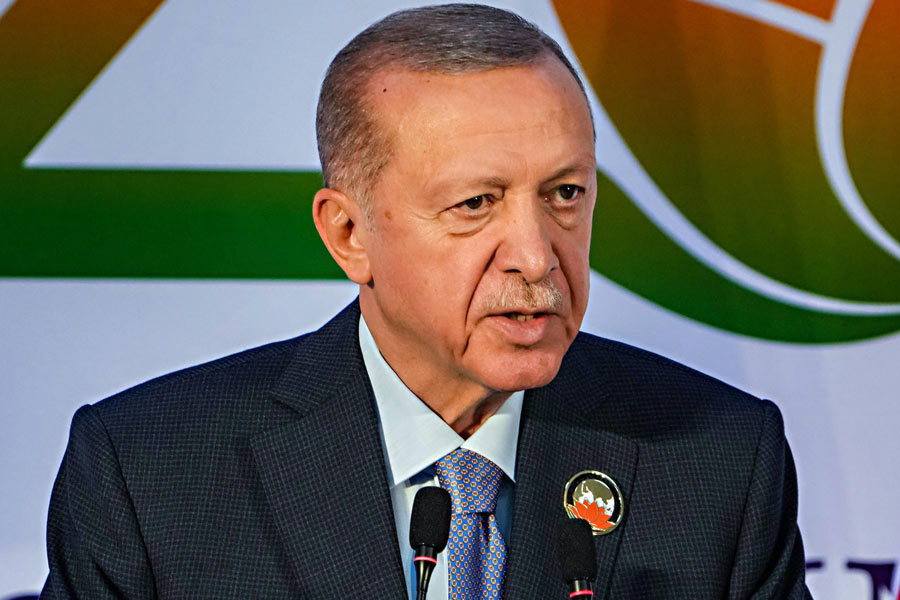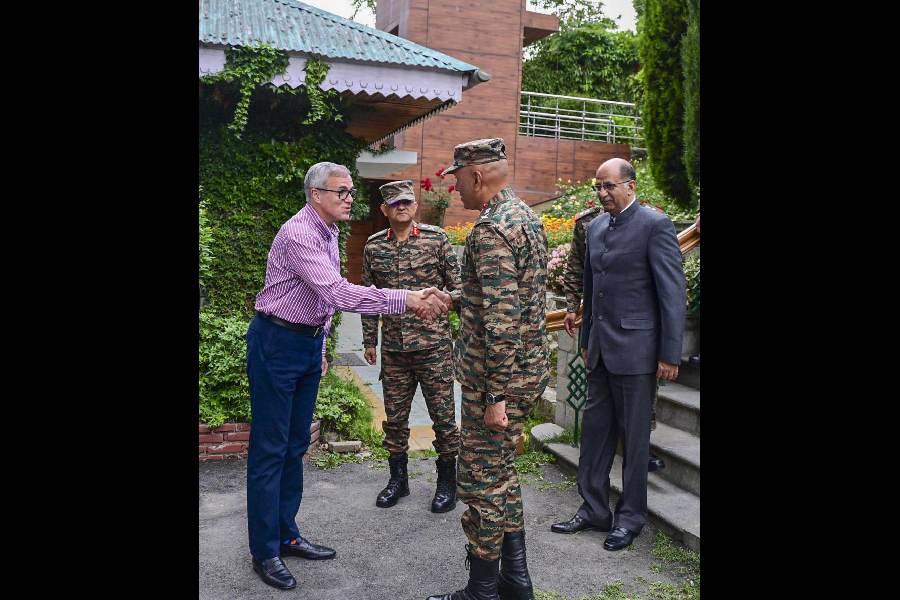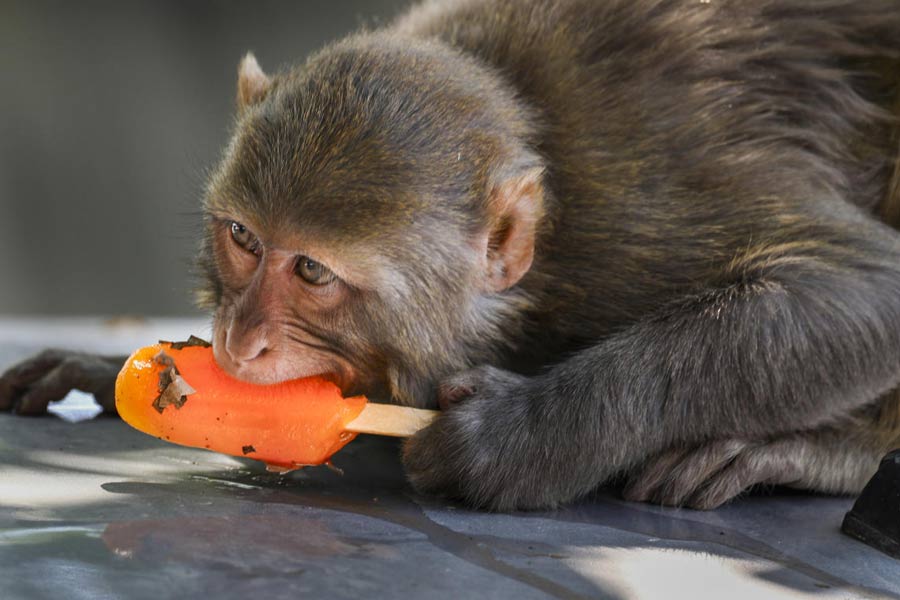 |
 |
 |
 |
 |
| (From top): A view of Reykjavik, the northern-most capital in the world; the stunning Jokulsarlon glacial lagoon; the Hallgrimskirkja church is a landmark in Reykjavik city; the Blue Lagoon geothermal spa tops Iceland’s must-see list; snow mobiles are a big hit with the tourist set |
This was by far, the best picnic we’d ever been on. Sure, there were no sunny skies, grassy knolls or even gambolling lambs. Yet we couldn’t help but give in to our surroundings. We were atop Vatnajokull, a stunningly beautiful glacier in Iceland and one that is said to be Europe’s largest glacial formation. Our glacier expert awaited us in Hofn, ready to escort us to the Vatnajokull ice cap. It was from there that we’d begin our adventure, at the mountain lodge Joklasel. The lodge itself offered twin treats: an awesome view of the Atlantic and Iceland’s highest altitude restaurant.
Clad in protective gear, we hopped onto snowmobiles to explore the glacier before us, which fanned out like an enormous white blanket. If that wasn’t enough, we continued onto the Jokulsarlon glacial lagoon — a location so stunning that it’s even served as a setting for a James Bond film. At Jokulsarlon, we enjoyed an exhilarating cruise among giant icebergs. Some were partly covered in volcanic ash from ancient eruptions and looked like naturally carved sculptures emerging from the sea. A more surreal backdrop we couldn’t have asked for!
Indeed the entire country of Iceland is a never-ending drama of natural forces — of volcanoes, geysers, glaciers, multi-coloured mountains and molten lava. And it hits you almost immediately. As soon as we came out of the Keflavik airport in Reykjavik and out on to the open road, we were confronted by a rugged moonlike landscape. Lava fields stretched out to distant mountain ridges. There were no trees, no rivers, and no valleys — particularly in this part of the peninsula that was formed by the volcanic activity, evident in fissures sprouting steam.
Reykjavik city, popularly known as ‘Smoky Bay’, is the world’s northern-most capital. The name, we were told came from early settlers who noticed steam rising from the ground. These were later found to be hot springs. Reykjavik has the best of both worlds — everything larger modern cities have to offer as well as a nearness to nature at its unspoilt best.
The city’s main attractions can be covered either by foot or by bus. There’s The Pearl, visible from most parts of Reykjavik. This is an interesting structure with a mirrored glass dome above a floor that houses a revolving restaurant. The restaurant in turn crowns a circle of six large geothermal water containers. Needless to say, the view from the revolving restaurant is to-die-for. The Hallgrimskirkja church and the National Museum of Iceland are also favourite spots for the tourist set.
But if there’s one place that tops Iceland’s must-see list, it’s the Blue Lagoon. Just about 20 minutes from Reykjavik airport, this unique geothermal spa offers relaxation — the natural way. You can flop down on the geothermal beach or explore the lava caves. The geothermal seawater is taken directly from the well and transferred via pipeline to the Lagoon. We sank ourselves into the warm, silky seawater that contained a host of natural active ingredients like salt, silica and blue-green algae. It was common consensus that we’d never felt so rejuvenated before!
If Reykjavik proved a treat, there was plenty more outside the city limits. A one-day trip from Reykjavik, the Golden Circle is hugely popular with tourists. And we soon found out why. The tour here takes in the Gulfoss waterfall, which is an Icelandic Niagara tumbling down a deep gorge; the Geysir hot springs; the volcanic crater, Kerio; and the Thingvellir National Park.
Of course throughout the tour, we were kept informed and updated about all things Icelandic. We were told that the word ‘geyser’ is the only Icelandic word used in the English language and that the word actually comes from the Geysir located in the South West of Iceland. Unfortunately, the Great Geysir has been somewhat inactive in recent decades. But it is said that when Geysir does perform, it lives up to its name, spewing a jet of steaming water 200 feet skyward.
Sadly we didn’t get to see Geysir in action, but we did catch the frequent eruptions of the nearby Strokkur, which spouts a 60 to 100 ft jet about once every five minutes. It is supposedly less spectacular than the Great Geysir — but we figured it would do, and fumbled for our cameras. The geyser area is also rich in walking paths that lead past steaming vents and colourful, mineral-rich mud formations. Extraordinary events unfold one after the other — and we found ourselves not looking away even for a second.
No less spectacular was our final stop, the Thingvellir National Park. Not only is the park one of exceptional geological beauty, it is also the site of some of the most historic events in Iceland. It is here that the oldest existing parliament in the world was founded way back in 930AD. Just over a thousand years ago, the world’s first parliament was held in this extraordinary natural amphitheatre — which sits bang in the middle of the Mid-Atlantic Ridge. The Great Atlantic rift, which is clearly visible, is slowly pulling Iceland apart along tectonic plates. Not a very reassuring thought, especially for first-timers like us in these parts.
From the park, we travelled through fertile farmlands to Hverageroi, a charming horticultural town. Here we saw just how geothermal energy has been harnessed to create unique greenhouse cultivation, something that’s become quite popular here owing to the climate and unstable volcanic soil.
Yet another day of spectacular sights awaited us when we set out to the port town of Akureyri in North Iceland. This is a place set amongst scenic mountains and which boasts some of the finest timber buildings in the country.
First up on our itinerary was a visit to the twin waterfalls of Godafoss after which we stopped at Lake Myvatn — Europe’s largest bird sanctuary where species breed among a mystical blend of lush vegetation and lava spires. The lake is surrounded by a landscape so otherworldly that Apollo astronauts came here to learn how to moonwalk. We followed this up with a walking tour of Dimmuborgir (dark castles), a surreal lava park with towering rock formations. Our day ended at the Hverarond, famed for its bubbling sulphur mud pots.
My time in Iceland came to an end almost too soon. Six days were just not enough to absorb the magic and majesty of a country that continues to awe and inspire. And like any Icelander will tell you — even a lifetime won’t be enough.
Photographs by Ashvin Popat and the author











